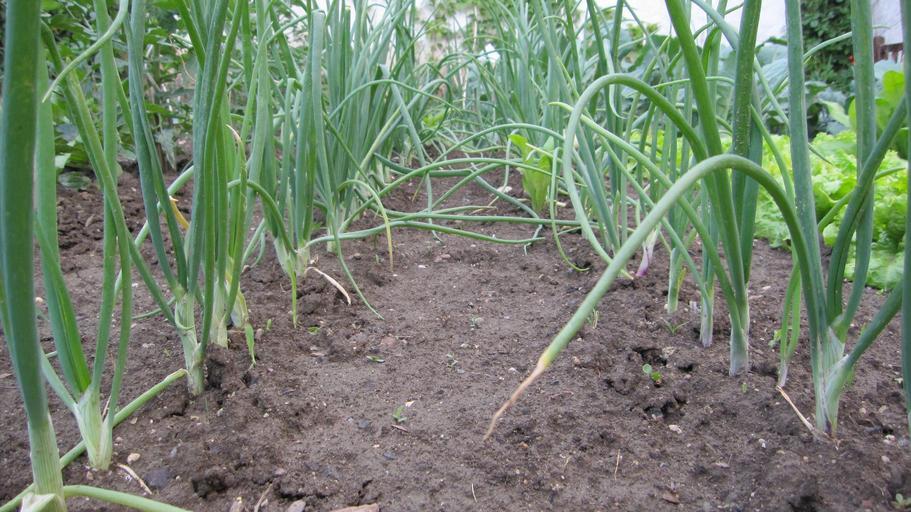
Spring onions are an absolute must for every back yard vegetable garden. They are easy to grow, require minimal attention and have very few pests or diseases that affect them in the typical back yard vegetable patch.
In many locations, spring onions are also known as scallions and are also often confused with green onions and shallots. In fact, depending on where you are, you can probably start an 'interesting' conversation about exactly what it is you call a 'spring onion'. I think the following article provides a good description of all three: How to tell the difference between Spring Onions, Shallots and Green Onions.
But when it comes to growing these essentials for the vegetable patch, it really doesn't matter; the approach is the same for all.
So how do you grow them?
Growing from seed
This is very simple. You can simply purchase your seed form a reputable organic supplier, or you can collect and save your own.
Saving your own seed is just a matter of:
- allow some plants from a crop to mature to the point of flowering.
- wait for the flower to fully form and dry.
- cut off the flower and place it in a dry bag for a couple of weeks.
- After a couple of weeks give it a good shake to remove the seeds from the dry flower.
- Collect your seeds and store them in a cool dry place until ready to sow.
I find it best to sow spring onion seed into containers before planting out into the garden. This enables simple separation and spacing out of seedlings in the bed with minimal wastage.
Once you have your spring onion seed, sprinkle it across the surface of some seed raising mixture and sprinkle some seed raising mixture to cover them - just enough to cover them, not more. Then, water them in. Keep them moist until ready to transplant into your vegetable patch.
Planting seedlings
Spring onion seedlings are very 'hardy', so take care, but you don't need to be overly gentle and delicate with them.
When planting them out:
- remove seedlings from their container.
- separate the seedlings from each other
- Plant seedlings 3 to 5 cm apart in rows that are approximately 15cm apart. You can plant them even closer if you wish.
- water them in with a good seaweed emulsion.

Succession planting
If you plant new seedlings every 3 to 4 weeks, you should have a constant supply for the kitchen.
What do Spring Onions Like?
- Regular watering
- A sunny position
- A good liquid fertiliser every couple of weeks
- Well drained soil that contains much orgainc matter - lots of compost.
- A soil pH around 6 to 7.
What Don't Spring Onions Like?
- Competition with weeds, so keep them weed free.
- Drying out. You do need to keep them well watered.
- Being planted near legumes. Therefore, plant them in a different bed to crops such as peas and beans.
Pests and diseases
The main pest that can affect spring onions are thrips. The basics for managing thrips are:
- Keep the area free of weeds to minimise other host opportunities for pest species.
- Spray with an insecticidal oil.
- Physically remove the thrips from the plants - using a garden hose carefully can achieve this.
- Maintain good biodiversity in your garden in order to encourage the presence of predator insects.
A good article about managing thrips can be found at: Thrip Management
So, give growing spring onions a go. They are one of the crops that should be found in every back yard vegetable garden.
I am an educator and passionate gardener and traveler. Throughout my adult life, gardening has been my passion, therapy, drive and source of purpose. Even as a child I had an intrinsic interest in plants and a desire to understand what makes them grow.
I distinctly remember the moment this began - my family was on one of our regular road trips from Hervey Bay; Australia. We were driving past a field of sugar cane. Dad pulled the car over and we cut a couple of sugar cane stems and brought them home for a treat. To be honest, I didn’t really like the taste, but I did want to try and grow it; and that is exactly what I did. It was then that my fascination, interest and passion for gardening and understanding plants began.
Fast forward a few years and I studied biological sciences and began what would be a 36 year career as a Biology educator. From this, I don’t only love gardening, but I also love helping others learn about gardening. I am also always looking for new ways to develop my own gardening knowledge. I like to think I am truly a life-long learner.
Fundamental to my beliefs about education is that learning is often best done as a part of a community - learning from others, and helping others to learn. It is this type of community that I hope iCultivate will be for its members - a community of gardeners, keen to share their gardening knowledge and wanting to learn about new ways to garden - a community built on the love of gardening.











Get involved!
Comments